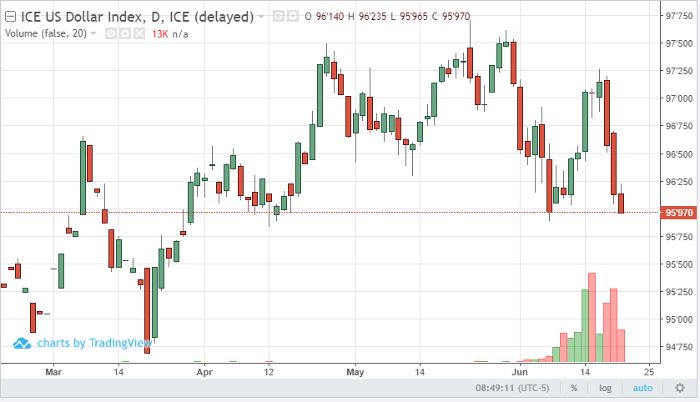
Currencies were in a dance this week on news that the Federal Reserve is prepared to ease monetary policy should growth continue to slow into the back half of the year. On Wednesday, the FOMC announced a lack of patience regarding rate cuts and said the Fed is ready to act as they see fit when it comes to stimulating the economy. While the attitude of the Board of Governors was generally dovish, specifics among the officials were more ambiguous. A handful of members warranted one 25 bps rate cut while others pushed for two quarter point cuts. Some wanted to remain neutral while one official said a rate hike may be necessary. This ‘dovishness’ was mostly priced into markets, but certainly was a catalyst for fluctuations following their announcement.
The Sep USD completely erased last week’s gains, as interest rate cuts open the door for inflation and add fuel to the bear camp in the dollar. We have been forecasting this topping process in the dollar, as slowing global growth eventually calls the Fed to action. As the greenback fluctuates, it sends ripples throughout global markets. Foreign currencies, particularly the euro, Swiss franc, and Canadian dollar, had a strong week as they all trade against the USD. The euro is in a win-by-default position, as European data has been weaker than that of other slowing economies, and the ECB is forecasting rate cuts as well. The euro pushed up against resistance Friday morning, while a close under 1.1312 would rekindle bear forces. Safe-haven assets around the world are heavily elevated this week, hinting at global nervousness as this train of a bull market may be running out of tracks. I believe any bounce in the dollar would be a result of simply being oversold, as the topping process in the dollar has been triggered by the Fed’s call to action (the probability of a rate cut in July is now above 70%).
U.S. Dollar Index Sep ’19 Daily Chart



